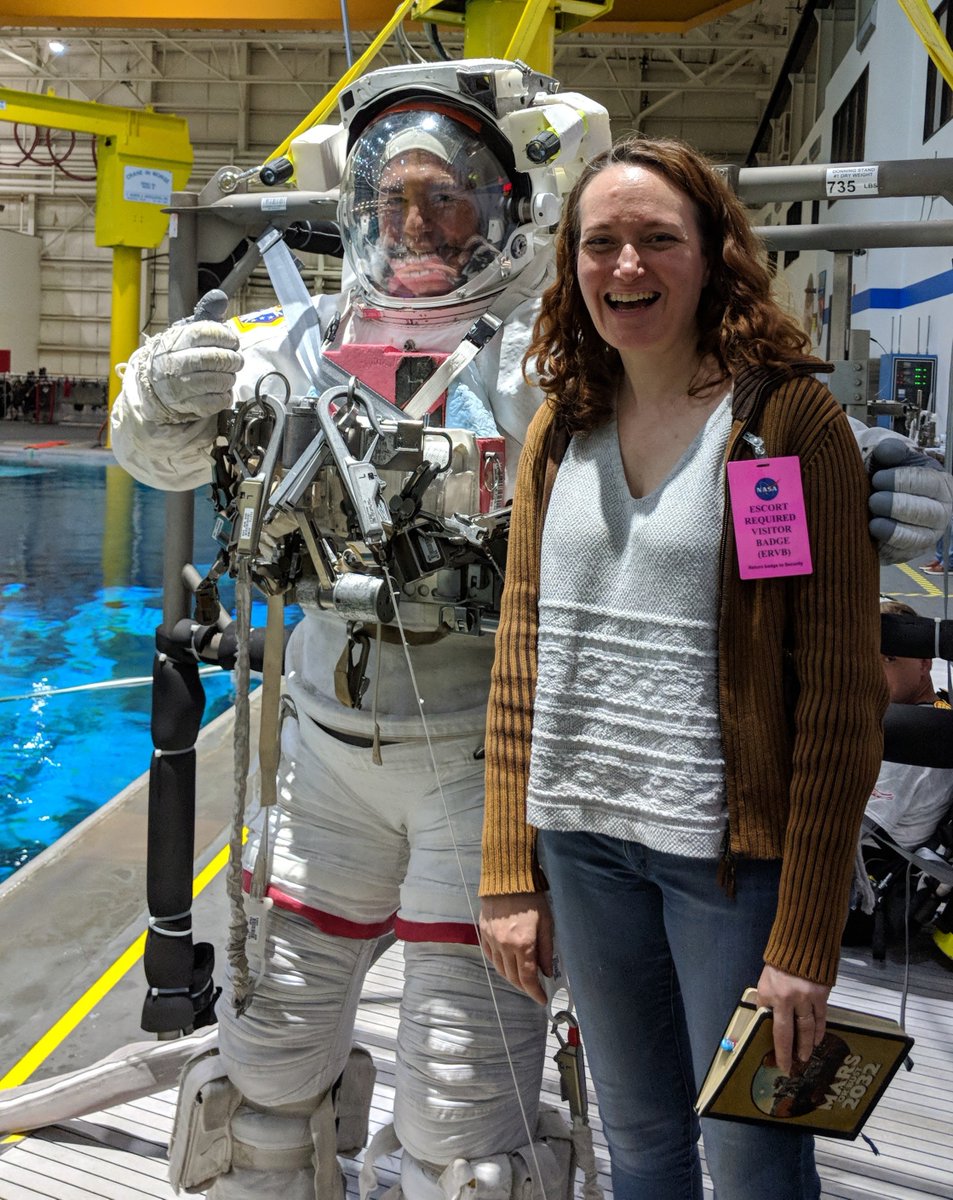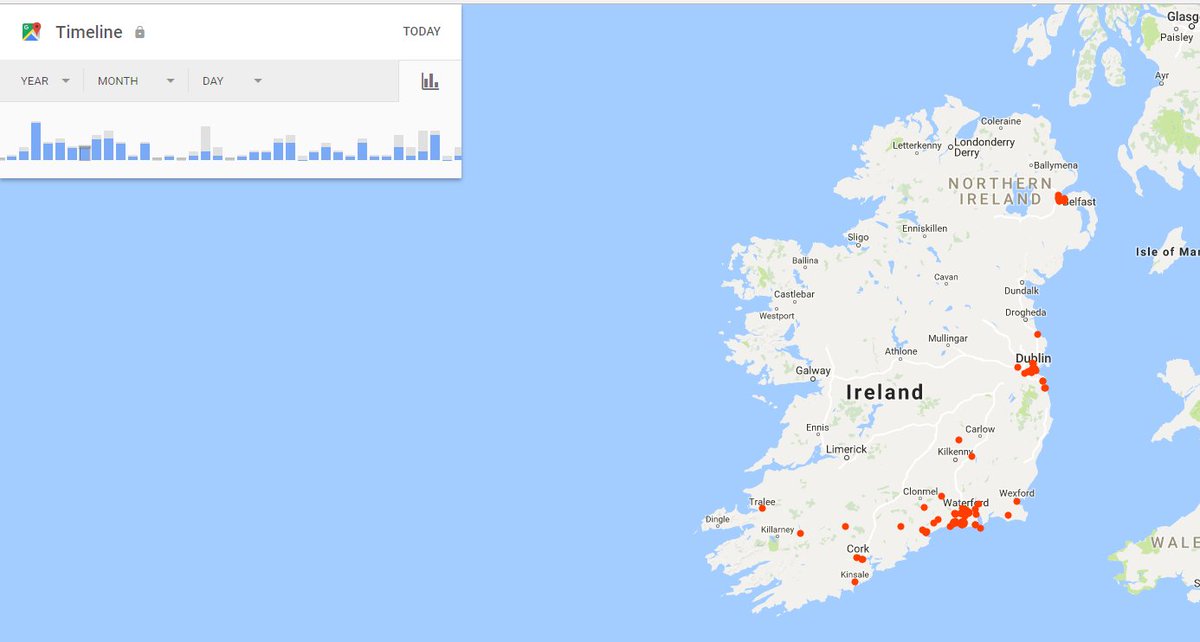APFR - articulated portable foot restraint.
ORU bag - Orbital Replacement Unit
crewlock bag - A bag used to haul equipment around on a spacewalk
When they say "good pull-test." They mean that literally.
Like. You break a microwave, you buy a new one.
NASA sends up duplicates for saftey.
You won't be able to bring along enough duplicates for everything, or send back to Earth easily for a replacement.
You'll need the ability to do repairs, so "unit" being replaced will necessarily change to parts.
They've linked two Retractible Equipment Tethers in a series to extend their length.
PLEASE INCLUDE TETHERS IN YOUR SCIENCE FICTION
This has been your PSA for today.
Okay. That's not a sharp weapon in space. It's the end of a probe and goes into a socket. Usually into a WIF (worksite interface fixture) but can be other things.
That's partly to make it easier to counter the torque.
Without gravity to hold you in place, you have to actively counter the drill's motion.
If you strip a bolt or a socket on a spacewalk, it is not an easy fix.
That's turned into a set of instructions that are transmitted up to the astronauts who will actually do the spacewalk.
They didn't have a lot of time to spend in space.
The answer is to train them to handle anything.
There's also a temperature difference. In sunlight it's 250F and in shadow its -250F
They mostly notice this in their hands. The gloves are not as well insulated as the rest of the suit, for mobility.
The frequency will change, depending on the speed and distance of the orbit, but they'll still get multiple sunsets.
I'm an SF writer trained as a puppeteer.
Waaaaaay more science over in his feed.
nasa.gov/johnson/HWHAP/…
"Crew member must remain quiescent."
I have not heard this in use on a spacewalk before and am totally using it in a story at some point. Such a good word.
Every occupation has its own jargon and in-group language. Like the fact that in the space industry, "nominal" means things went well.
The Public Affairs Officer today is Dan Huot.
Astronaut Stephanie Wilson is the one giving directions to the spacewalkers.
Stephanie Wilson, on the other hand, would have been involved in the dev runs. So in addition to having a list of procedures in front of her, she's also seen a bunch of different approaches to doing this.
They're checking to make sure there aren't any punctures or tears on the gloves. Since they are in contact with the station, those are most vulnerable to damage.
(Also, sunrise coming up)
Christina Koch is spacewalking.
Stephanie Wilson is CapCom
Drew Morgan is the only man actively involved in this spacewalk.
This isn't the first all-female spacewalk, but it is the first time women have outnumbered the men.
Welcome to the 21st century, where it is still unusual for there to be more women than men involved in task, on Earth or in space.
This allows her to use both hands to work.
This is why you will see me get cranky when I'm reading SF set in the future in which someone only has an hour of air in their suit.
That's not even enough time to get out of the airlock.
Also, of the consumables you're worried about, the oxygen is the easiest to manage.
If your suit loses power, you lose comms, heating/cooling and the fans.
Without fans, the CO2 will build up around your face. That would be a bad day.
That's why they have a CapCom or IV (intra-vehicular) person to guide the spacewalk.
Micro-gravity is all floaty, which sounds great, but it also means you aren't getting any assistance to hold yourself or your tools in place.
That's a reference to the lock indicator on a tether. It's two black lines that form a single solid line when the tether is locked.
docs.google.com/document/d/1nD…
If you order them from my local independent bookstore @ParnassusBooks1, I'll sign it. Put a note in the comment field if you want it personalized.
parnassusbooks.net/book/978076539…
In the NBL, the challenge is to get things moving through the water resistance.
In space, the challenge is stopping them.
NASA categorizes these into "contact injuries" and "strain injuries."
Most on orbit injuries are acquired during a spacewalk.
This can lead to bruises, abrasions, blisters, fingernail delamination and... onycholysis.
The nails actually coming off.
The EMUs gloves have 5 layers. On STS-118, a tear went through two of the layers and they cut the spacewalk short to be on the safeside.
en.wikipedia.org/wiki/STS-118#W…
en.wikipedia.org/wiki/STS-37#Sp…
WARNING: I have no independent confirmation for this.
That said, there's also a fair chance their skin and interior garments would plug a small hole.
Remember: Even a pristine spacesuit is not entirely airtight.
1. Not enough air in the suit
2. The hand would have swollen and self-sealed the hole.
3. Steering would suck.
There's a problem installing this adapter plate. The "soft dock" means they placed it, but haven't attached it yet.
In a swimming pool.
With someone else reading the instructions from the lifeguard stand.
While swaddled in pool floaties.
Wearing oven mitts.
And a mistake could kill you or cost millions of dollars.
There's no pressure or anything, being an astronaut.
Space is very glamorous.
There are designs for newer ones, but funding constraints and shifting goalposts mean that they have not completed testing, much less gone into production.
A "get-ahead" is a task scheduled for the next spacewalk. This is a good illustration of why they get skill-training instead of task training. They can continue getting work done.
He was wrong.
You're floating in it, and often don't really have contact with the soles or tops.
*Articulated Portable Foot Restraint
tor.com/2019/02/06/art…
1. Astronaut A translates to the length of their safety tether, hauling astronaut B's tether with them.
2. They secure their local tether & B's tether.
3. B "leapfrogs" past them, carrying the far end of A's tether.
It extends their range while remaining tethered.
The reason it's important to make that report, is that different astronauts will do the next spacewalk.
Spacewalks are seriously arduous, which is why you rarely see someone doing them back-to-back.
The other reason that I watch spacewalks, professionally, is to learn how things are said aloud when I'm doing audiobook narration.
Then you have things like PGNCS is pronounced "pings"
And watch everything tumbling around as she's doing the inventory.
The ISS goes in and out of shadow with each orbit, so minimizing that for the equipment prolongs its life.
They USED to get dried fruit bar in a sleeve. To access it, they'd bite it and pull it up.
However...
It was...off-nominal.
So, now they just eat a big breakfast and have a hearty meal afterwards.
A support diver later swam up to them and with a piece of pizza in a ziplock bag.
When Stephanie says "we're discussing" she means the backrooms and specialists are working the problem. As CapCom or Ground IV, her job is to parse and relay that to the astronauts.
You'll note that he doesn't slid his hands as he translates along the handrail. Micrometeorite impacts can create sharp ridges. Sliding can slice a glove.
Meanwhile, Christina has spotted MMOD which has caused a sharp edge on the station. They'll note it as a caution for future spacewalks.
Here's more information about why these are a problem. tl;dr - they're sharp and can tear gloves.
universetoday.com/101567/how-mic…
Note that even when they go into the airlock, they tether themselves and the equipment. Until they close the hatch and repress the airlock, they are still in space.









